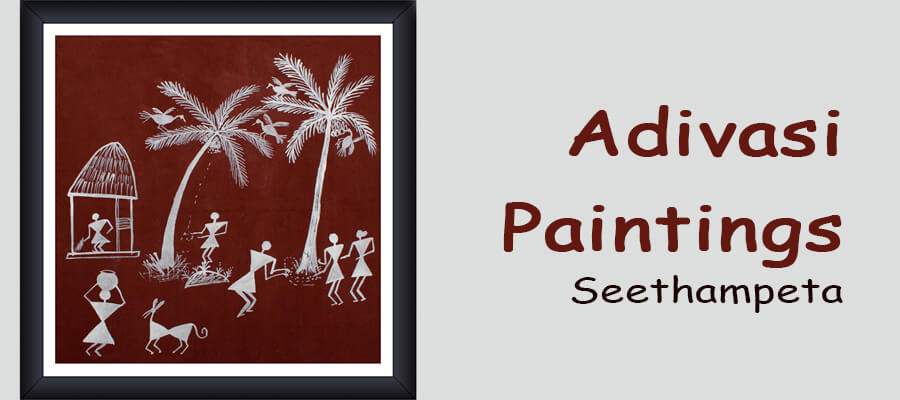
Tribal art is considered very special, especially in a country like India, where they are present in significant numbers. Their distinct culture and isolation in remote areas, have resulted in unique traditions, which is reflected often in their art forms. The Warlis are an indigenous tribe, generally known as Adivasis. They inhabit the mountainous and coastal areas of Maharashtra and Gujarat border region and the surrounding areas. In Telangana, certain tribes in Nalgonda too create these paintings.
What Makes Them Unique?
The skillful brush stroke of the tribal artists who create the master pieces, are a delight to observe. The paintings are extremely rudimentary and these wall paintings consists of a very basic graphic vocabulary in the form of a circle, a triangle and a square. These tribal paintings are mostly monosyllabic. The shapes like circle and triangle are based on the observation of nature, while the circle represents the sun and the moon. The shape of the triangle is mainly derived from the mountains and pointed trees. In these paintings, only square is related a different logic, denoting sacred enclosures or piece of land. Therefore, the central motives in each ritual painting is mainly the square, which is known as the "chauk" or "chaukat". This is mostly of two types namely Devchauk and Lagnachauk.
Inspired by Nature!
The central motive of the ritual paintings involves scenes which portrays tribal activities like fishing and farming, as well as hunting, festivals and dances, and the natural environment like trees and animals. The bodies of humans and animals are represented by two triangles which are joined at the tip. Here, the upper triangle shows the trunk while lower triangle denotes the pelvis. The precarious equilibrium implies the universal balance, and also that of the couple. It reflects the act of animating the bodies.
The Technique Involved in Tribal Paintings
The pictorial language is backed with its rudimentary technique. These ritual paintings are mostly completed inside the huts, the walls of which are made, using a mixture of branches, as well as earth and cow dung. The background is Red Ochre for these wall paintings.
The tribals make use of only white colour in paintings. The white pigment used is a mixture of rice paste and water while natural gum is used as the binding agent. The tribals use a chewed bamboo stick like a paintbrush. The wall paintings are usually done marking special occasions such as weddings or harvests.
The highly crude style of tribal paintings, was a preserve of the womenfolk earlier, but later even men have started practicing the art. The modern designers are quite enthralled by this art form, and have also created an entire line of designer dress wear, which is based on Tribal paintings. They make use of traditional patterns which involves rich and folksy colors for recreating the magic of these paintings in dresses.

